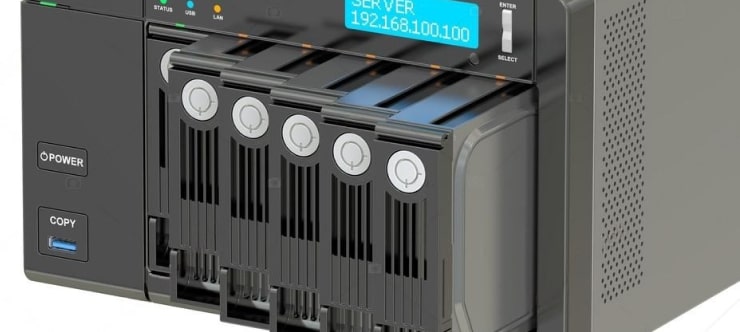What is Data Virtualization: Benefits, Limitations & Use Cases

I think there's an issue with my storage device, but I'm not sure
Start a free evaluationData virtualization is a powerful technology that has revolutionized how businesses access, manage, and analyze data. You can use software to integrate data from multiple sources without physically moving it. This is a part of the future of data storage on current days.By creating a logical data layer to integrate siloed enterprise data from disparate systems into one unified source, it provides users with real-time access to fresh updates for analytics and other applications.With integrated governance and security measures in place, businesses are ensured their data is consistent, high quality, and protected. This makes data virtualization an incredibly valuable tool in the modern business landscape.
What is data virtualization?
Data virtualization is the process of combining distributed data from disparate sources into a single, unified source. It allows on-demand and real-time remote access to business data.This can be done through the use of a logical data layer that integrates all enterprise data siloed across different systems, managing it for centralized security and governance, and delivering it to business users in real-time.Therefore, by making use of this technology, organizations can access up-to-the-minute updates on their data and apply a range of analytics with ease.
Benefits of virtualization
Data virtualization provides several benefits over traditional methods of integrating data from multiple sources.
- Virtualization scalability allows businesses to quickly add new or additional sources without the need for extensive IT resources or administration. Meaning they can make full use of their data for more powerful insights.
- Possibility to operate in a cloud environment combined with the physical data center. This creates hybrid data storage for a secure and private network.
- It eliminates redundant and duplicated data, ensuring that all information is reliable and accurate.
- With unified security and governance measures in place, businesses can be assured that all of their data remains protected.
- Real-time access allows users to access and edit data without the need to move it from one location to another.
- It has a low cost for implementation, especially when compared with the investment for consolidated data storage and management.
- Virtualization follows the fast-paced world of businesses. Since all organization’s data is available through a single virtual layer for the users, every process is dynamic.

What are the downsides and limitations of data virtualization?
Although data virtualization offers many advantages, there are some downsides and limitations to consider.
- The Data Virtualization server has a single access point to all data sources, meaning, a single point of failure.
- It does not provide a historical analysis of data.
- It is not compatible with bulk data movement.
How does data virtualization work?
Data virtualization uses technologies to integrate data from multiple sources and provide businesses with unified governance and security. With its scalability, real-time updates, analytics capabilities, and more, it is an invaluable tool for any organization wishing to make the most of its data.The technology combines data from multiple sources, creates a logical layer to integrate it into one unified source, and makes it available in real time. This means that businesses can access on-demand data updates for their analytics and other applications without needing extensive IT resources or administration.Furthermore, its integrated governance and security measures ensure that the data remains consistent, high quality, and protected at all times. Additionally, as the technology is scalable, businesses can quickly add new or additional data sources when needed.
Multiple data virtualization uses
There are several cases where data virtualization is a good storage technology option.You can use virtualization for:
- Data integration
- Remote data management
- Facilitate moving data
- Cloud data sharing
- Ease data access
- Data access layer for analytics
What a data virtualization program must have
For data virtualization to be successful, there are certain features that software must have.A virtualization program should be able to integrate data from multiple sources in an automated and secure manner. It also must provide users with the tools necessary to analyze the data - such as dashboards and analytics capabilities - allowing them to uncover insights more quickly. In addition, it should have governance and security measures built-in to ensure all information is consistent and remains protected at all times.
How can you use virtualization to protect your business data?
Data virtualization can be used to protect business data by combining multiple sources into one platform with unified governance and security measures.This helps ensure that all data is consistent, accurate, and protected at all times.This technology helps increase your data protection by:
- Creating real-time data backup in case of system failure or disaster
- Allows faster recovery as you don’t need to rebuild the entire system
- Eliminate the risk of data breach by isolating the system
Additionally, the technology can also provide real-time updates which make sure that businesses can access the most up-to-date information quickly and accurately. Finally, it offers scalability so businesses can easily add new or additional data sources if needed without having to perform extensive IT resources or administration.With more people working remotely, and using personal computers to do so, taking measures to provide cybersecurity to business data is an obligation.
How does virtualization help with a disaster recovery plan?
Data virtualization not only can improve the dynamics of your business daily routine but can also help you protect the data and keep business continuity. Likewise, it also can prevent huge losses, minimize the effect of disasters, and help you with your disaster recovery by storing every bit of data in the cloud servers.This is how data virtualization can help you with disaster recovery:
- Reducing downtime
- Creating off-site backups
- Recover data from failed drives
Summary
In conclusion, data virtualization is how you can keep your business competitive in a world where information must travel fast. But, most importantly, virtualization can help you protect your data and keep updated backups.Contact SalvageData 24/7 for emergency data recovery or if you need help with your recovery plan.
Related services
These are the most commonly requested data recovery services. At our headquarters' cleanroom lab, our certified engineers conduct a thorough review of any type of physical storage device, determining if there is logical or physical damage and carefully restoring all of the lost files.ces.

External Drive Data Recovery
We recover data from both external SSD and HDD drives. Rely on certified experts to restore your important files from damaged or corrupted external drives.

Hard Drive Data Recovery
Recover data from all brands of HDD, PC hard drives, and hybrid disks. Our specialists ensure fast and secure recovery for any data loss scenario.

NAS Data Recovery
Recover data from NAS devices, including RAID configurations. Our team handles all types of NAS systems and ensures data recovery with minimal downtime.

RAID Data Recovery
Our RAID data recovery services cover RAID 0, 1, 5, 10, and other configurations. We offer expert solutions for failed, degraded, or corrupted RAID arrays.

SAN Data Recovery
Our team specializes in handling SAN devices from leading manufacturers like Dell EMC, HP, and IBM, ensuring efficient recovery with minimal disruption to your operations.

SD Card Data Recovery
Our recovery experts specialize in restoring data from SD and memory cards. We guarantee quick recovery with a no-data, no-charge policy.

SSD Data Recovery
Our data recovery experts handle all SSD data loss scenarios with advanced tools, ensuring maximum recovery with high-security protocols.

USB Flash Drive Data Recovery
Recover lost data from USB flash drives, regardless of the damage or brand. We offer free in-lab evaluations to assess data recovery needs.
If you’re unsure about which data recovery service to choose, let our team assist you in selecting the appropriate solutions. We understand the anxiety that comes with a sudden drive failure, and we are more prompt in our actions compared to other recovery service providers.



